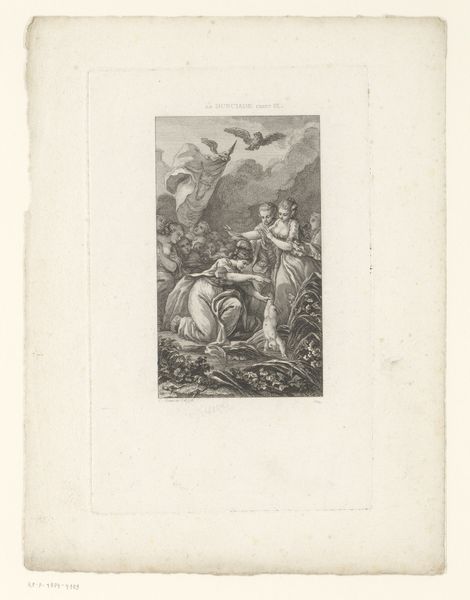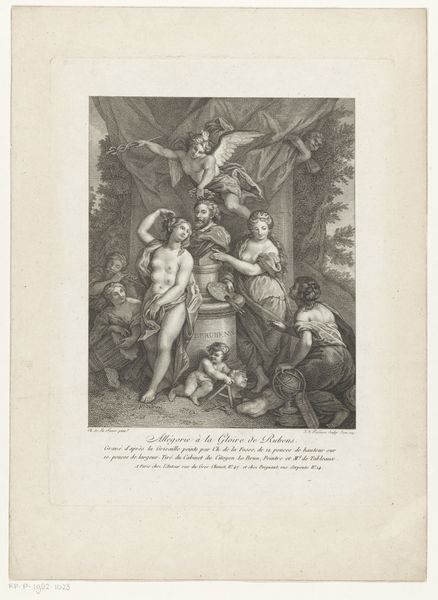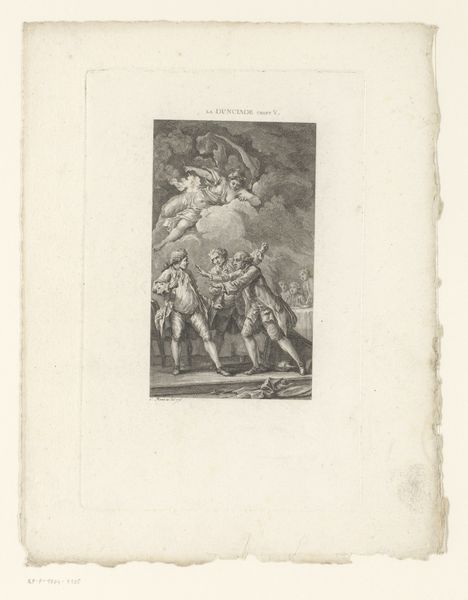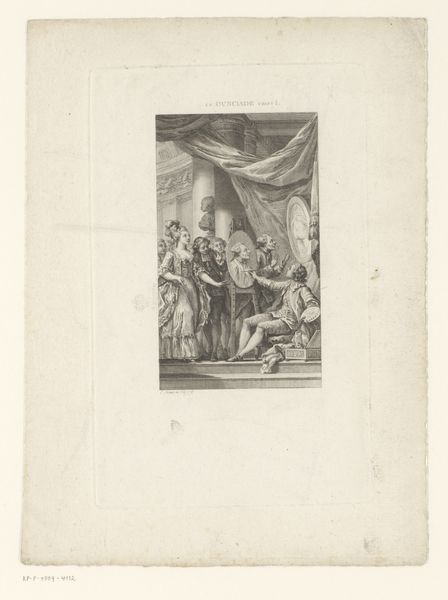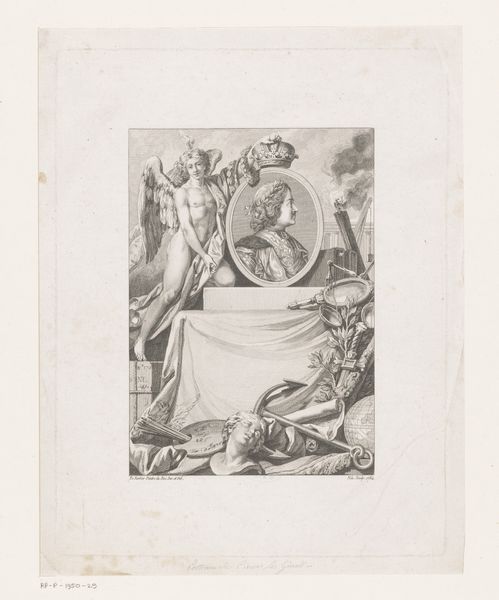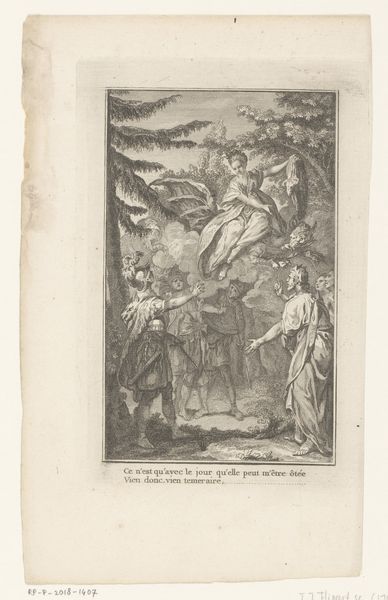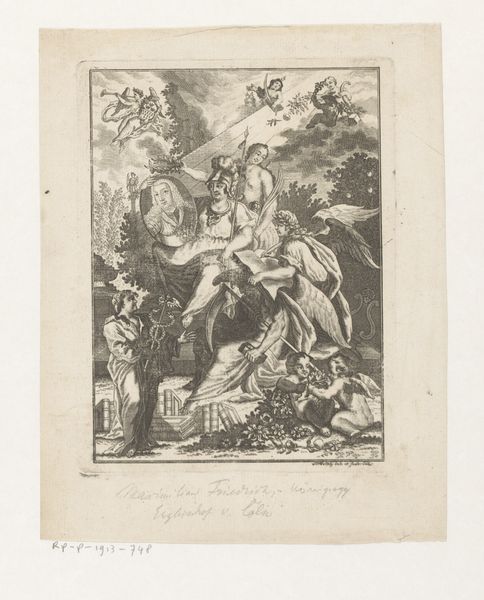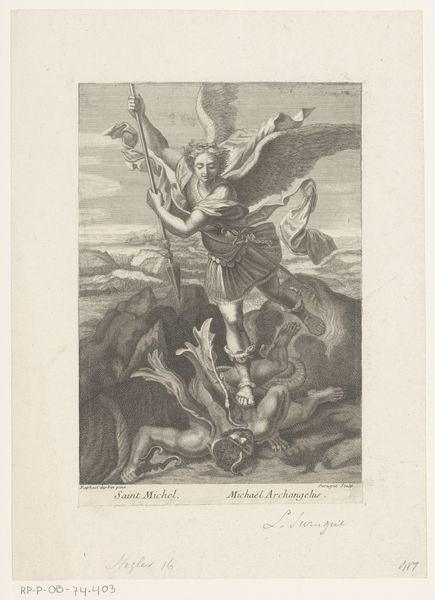
Scène uit een gedicht met een koppel omgeven door putti met een schild 1776 - 1800
0:00
0:00
anonymous
Rijksmuseum
print, paper, engraving
#
neoclacissism
#
allegory
# print
#
figuration
#
paper
#
history-painting
#
engraving
Dimensions: height 233 mm, width 147 mm
Copyright: Rijks Museum: Open Domain
Curator: Welcome. Today, we’re looking at "Scène uit een gedicht met een koppel omgeven door putti met een schild," an engraving on paper from between 1776 and 1800, part of the Rijksmuseum's collection. Editor: My initial reaction is how light and airy it feels. The contrast between the fine lines and the almost dreamy subject matter is quite striking. It almost feels as if I am looking at a play frozen in time. Curator: It's interesting you say that. The neoclassical style here seeks to connect us to the historical theater of power, and the putti with the shield suggest divine favor upon the central couple. I’m curious to analyze the ways the artist uses symbols of power to portray idealized love and legacy, but through whose lens? Editor: I’m drawn to the process itself. Think about the skill required to achieve this level of detail through engraving! The tools, the labor… it speaks volumes about the artistic practices of the late 18th century and the value placed on meticulous craftsmanship and visual allegories to reinforce status and norms. It would be worthwhile to dig into where the materials came from as well. Curator: Absolutely, and how that intersects with gendered narratives. The woman, likely allegorical, passively receives the implied honor. This resonates with contemporary discussions about the roles prescribed to women during that period, as essentially muses in historical narratives defined by masculine accomplishment. Editor: I agree there’s an unequal weight implied in terms of achievement and ownership. It underscores how artistic representations, even those aiming for grandeur, are ultimately rooted in specific material conditions and, perhaps unequal, power relations. Curator: Ultimately, grappling with these artworks from a gendered and political perspective illuminates the often-unacknowledged biases embedded within even the most revered historical narratives, challenging viewers to consider what those stories and the chosen subjects represent. Editor: By appreciating the technique as physical labor and the materiality involved, it moves our gaze toward acknowledging all contributing individuals, named or unnamed, as creators of this artifact.
Comments
No comments
Be the first to comment and join the conversation on the ultimate creative platform.
